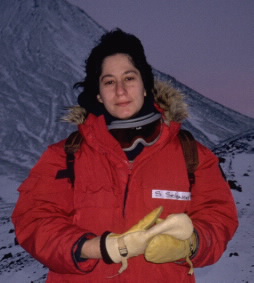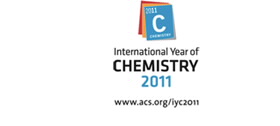EMBARGOED FOR RELEASE | August 29, 2011
Mysteries of ozone depletion continue 25 years after the discovery of the Antarctic ozone hole
Note to journalists: Please report that this research was presented at a meeting of the American Chemical Society.
DENVER, Aug. 29, 2011 — Even after many decades of studying ozone and its loss from our atmosphere miles above the Earth, plenty of mysteries and surprises remain, including an unexpected loss of ozone over the Arctic this past winter, an authority on the topic said here today. She also discussed chemistry and climate change, including some proposed ideas to “geoengineer” the Earth’s climate to slow down or reverse global warming. The talk happened at the 242nd National Meeting & Exposition of the American Chemical Society (ACS), being held this week.
In a Kavli Foundation Innovations in Chemistry Lecture, Susan Solomon, Ph.D., of the University of Colorado, Boulder, said that the combined efforts of scientists, the public, industry and policy makers to stop ozone depletion is one of science’s greatest success stories, but unanswered questions remain. And ozone is still disappearing.
“We’re no longer producing the primary chemicals — chlorofluorocarbons (CFCs) — that caused the problem, but CFCs have very long lifetimes in our atmosphere, and so we’ll have ozone depletion for several more decades,” said Solomon. “There are still some remarkable mysteries regarding exactly how these chlorine compounds behave in Antarctica — and it’s amazing that we still have much to learn, even after studying ozone for so long.”
Media Contact
During the meeting, Aug. 25-Sept. 1, the contacts can be reached at: 303-228-8532
Michael Bernstein
202-872-6042
m_bernstein@acs.org
Michael Woods
202-872-6293
m_woods@acs.org
The ozone layer is crucial to life on Earth, forming a protective shield high in the atmosphere that blocks potentially harmful ultraviolet rays in sunlight. Scientists have known since 1930 that ozone forms and decomposes through chemical processes. The first hints that human activity threatened the ozone layer emerged in the 1970s, and included one warning from Paul Crutzen, Ph.D., that agricultural fertilizers might reduce ozone levels. Another hint was from F. Sherwood Rowland, Ph.D., and Mario Molina, Ph.D., who described how CFCs in aerosol spray cans and other products could destroy the ozone layer. The three shared a 1995 Nobel Prize in Chemistry for that research. In 1985, British scientists discovered a “hole,” a completely unexpected area of intense ozone depletion over Antarctica. Solomon’s 1986 expedition to Antarctica provided some of the clinching evidence that underpinned a global ban on CFCs and certain other ozone-depleting gases.
Evidence suggests that the ozone depletion has stopped getting worse. “Ozone can be thought of as a patient in remission, but it’s too early to declare recovery,” said Solomon. And surprises, such as last winter’s loss of 40% of the ozone over the Arctic still occur due to the extremely long lifetimes of ozone-destroying substances released years ago before the ban.
Solomon also took listeners on a tour of gases and aerosols that affect climate change and described how these substances can contribute to global warming.
“On the thousand-year timescale, carbon dioxide is by far the most important greenhouse gas produced by humans, but there are some other interesting — though much less abundant — gases such as perfluorinated compounds that also last thousands of years and similarly affect our climate for millennia,” said Solomon.
Increases in atmospheric “greenhouse gases” such as carbon dioxide trap heat in the atmosphere, causing the Earth’s temperature to creep upward. Global warming is causing ocean levels to rise and could lead some regions to become dry “dust bowls.”
Dealing with global warming has prompted a lot of interesting research on how to reduce greenhouse gas emissions, how to adapt to a changing climate and on the possibility of ‘geoengineering’ to cool the climate.
“Recent studies on ‘geoengineering’ the Earth’s climate involve stratospheric particles of different sorts,” she said. “Most of these schemes involve sulfate particles, but other types have been proposed.”
The talk took place on Monday, August 29, from 5:30 to 6:30 p.m., Mountain time in the Wells Fargo Theater at the Colorado Convention Center.
Sponsored by The Kavli Foundation, a philanthropic organization that supports basic scientific research, the lectures are designed to address the urgent need for vigorous, “outside the box” thinking by scientists as they tackle the world’s mounting challenges, including climate change, emerging diseases, and water and energy shortages.
“We are dedicated to advancing science for the benefit of humanity, promoting public understanding of scientific research, and supporting scientists and their work,” said Kavli Foundation President Robert W. Conn in a statement. “The Kavli Foundation Innovations in Chemistry Lecture program at the ACS national meetings fits perfectly with our commitment to support groundbreaking discovery and promote public understanding.”
The Kavli lectures debuted at the Anaheim meeting in March during this International Year of Chemistry and will continue through 2013. They will address the urgent need for vigorous, new, “outside-the-box”- thinking, as scientists tackle many of the world’s mounting challenges like climate change, emerging diseases, and water and energy shortages. The Kavli Foundation, an internationally recognized philanthropic organization known for its support of basic scientific innovation, agreed to sponsor the lectures in conjunction with ACS in 2010.
###

Foundation Lecture at the ACS 242nd National
Meeting & Exposition.


